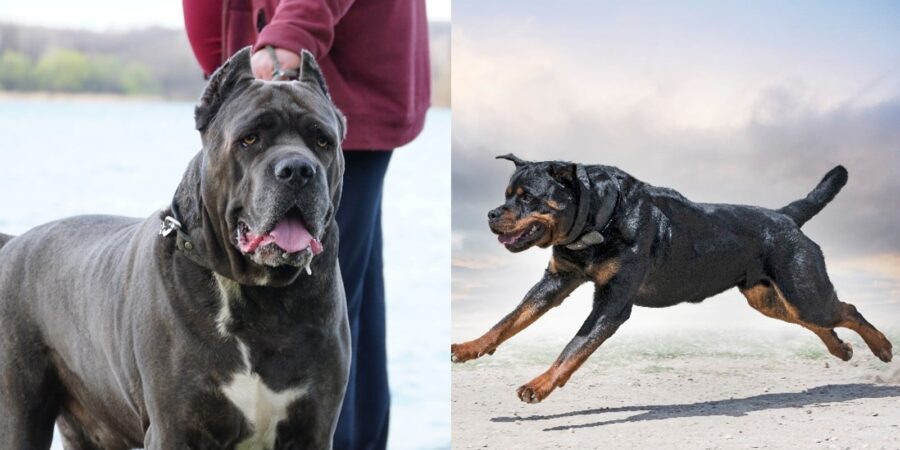“I must say though I find it a little nauseating when I keep hearing dog professionals say ‘these dogs are not for first-time owners.’”
That was a comment left on one of my YouTube videos, and I get it. For someone who’s serious about bringing a dog into their life, someone willing to do the research, put in the work, and commit fully, to their breed of choice, and then being told you’re not ready can feel condescending or flat-out dismissive.
So let’s talk about what canine professionals like myself actually mean when we say a breed “isn’t for first-time owners.” And by professionals, I don’t just mean credentialed behaviorists or trainers—I’m talking about people with decades of hands-on experience owning, training, and living with dogs day in and day out. People like me, who’ve been doing this for nearly 35 years and have seen firsthand what happens when the wrong dog lands in the wrong home.
In this post, I’ll break it down into five core realities behind that phrase—what it’s really saying (and not saying), which dogs it applies to, and how to know if you’re truly ready to take on a more challenging breed.
We’re Not Questioning Your Capability
When trainers, behaviorists, or those of us with decades of experience make these statements, we’re not suggesting you’re incapable or unworthy. We’re not implying that you need to “earn your way up” to certain breeds or that your age, fitness level, or intelligence isn’t sufficient.
What we are saying is that some breeds come with challenges that can easily overwhelm even the most well-intentioned, responsible person—if they lack hands-on, day-to-day experience owning a dog.
Research ≠ Experience
I have a mantra that I never get tired of saying: “You won’t know what it’s like to own a dog until you own a dog.”
I constantly hear “I’ve done my research” or “As long as you know what you’re getting into…” But research can’t prepare you for living 24/7 with a high-drive working breed or stubborn terrier that ignores you when it catches a scent.

Many clients reach out not because they didn’t research, but because they did—and still felt overwhelmed by conflicting advice. Real-life dog ownership is messier, louder, and more unpredictable than any article conveys.
Petting your parents’ Labrador, house-sitting a friend’s Beagle, or volunteering at a shelter isn’t the same as living 24/7 with a high-drive, strong-willed, or prey-driven dog that relies on you to meet its physical, mental, and emotional needs—every single day.
The Stakes Are Higher With Certain Breeds
Real example: My neighbors got a Goldendoodle as their first dog. When fully grown at 70 pounds, he developed strong prey drive. One day, he lunged after a squirrel and yanked his owner face-first onto pavement, sending her to urgent care.
Now imagine that scenario with a Rottweiler or Cane Corso—breeds specifically developed for protection work. The consequences could be far worse, with crushing legal and financial liability.

Most first-time owners don’t grasp how strong a 50-pound dog can be, let alone 90-130 pounds.
It’s About Temperament and Purpose, Not Just Size
Many large breeds make excellent first-time companions. The concern is with breeds developed for specific jobs requiring drive, confidence, and independence:
Working Protection Breeds (make independent decisions)
- Rottweiler, Doberman, German Shepherd, Cane Corso
Highly Intelligent Breeds (test boundaries, need consistent leadership)
- Border Collie, Standard Poodle, Australian Cattle Dog
Strong-Willed Breeds (unforgiving of training mistakes)
- Akita, Airedale Terrier, Jack Russell Terrier
Physically Powerful Breeds (require proper handling from day one)
- American Bulldog, Bullmastiff, Alaskan Malamute
High-Drive Breeds (demand constant stimulation)
- Belgian Malinois, Siberian Husky, Weimaraner

Can First-Timers Succeed? Yes—With Structure
These aren’t “figure it out as you go” breeds. Mistakes have consequences that affect both you and your dog.
Success requires:
- Working with reputable breeders who prioritize temperament
- Committing to professional training from day one
- Providing daily structure and consistent boundaries
- Setting up your home for success (secure fencing, proper gear)
- Honest assessment of your time, energy, and commitment
The Bottom Line
Dog ownership is one of life’s great joys, but it’s also a significant responsibility. The right dog can change your life; the wrong dog can break your heart.
If you’re set on a breed like a Doberman, Rottweiler, Malinois, or even an intense terrier, I won’t tell you it’s impossible. But I will strongly encourage you to:
Shelters overflow with dogs from well-meaning owners who underestimated their challenges. Our advice isn’t about limiting choices—it’s about preventing heartbreak.
If you’re set on a demanding breed:
- Observe before you commit – Contact breed-specific trainers and as if you can monitor a training class
- Build your support team early – Establish trainer relationships before bringing your dog home
- Be brutally honest – About your time, energy, and willingness to provide daily structure
- Talk to real owners – Ask what surprised them, what’s been difficult, and what they wish they’d known
With proper preparation, professional support, and the right mindset, even demanding breeds can become extraordinary companions for dedicated first-time owners. But success comes from clarity and consistency—not just love.
Discover more from The Pup Mommy
Subscribe to get the latest posts sent to your email.






Leave a Reply